Understanding the importance of a work breakdown structure is essential for successful project management. A WBS takes complex deliverables and breaks them into manageable tasks, helping teams stay organized, on time and aligned with the project’s objectives. Whether you’re building a construction project schedule or launching a new product, the importance of a WBS in project management lies in its ability to clarify scope, structure workflows and ensure accountability at every level.
In this blog, we explore the importance of work breakdown structure in project management by outlining its key benefits, showing how templates can help and explaining how software like ProjectManager makes WBS creation easier and more effective. From work breakdown structure importance to answering why WBS is important in project management, this content will help you strengthen planning, improve execution and deliver better project outcomes.
What Is the Importance of a Work Breakdown Structure in Project Management?
The importance of a work breakdown structure cannot be overstated—it brings structure and clarity to the entire project. The WBS is a hierarchical decomposition of project deliverables into manageable sections, making it easier to plan, assign and monitor work. The importance of a WBS in project management lies in its ability to break down complex objectives into actionable tasks. This ensures everyone knows what needs to be done, when and by whom.
The work breakdown structure in project management increases project visibility, defines scope, prevents scope creep and creates a solid foundation for estimating time, cost and resources. Whether you’re managing a small task force or a large-scale initiative, the importance WBS plays in alignment, transparency and accountability is critical.
When managing a project, using project management software amplifies the importance of a work breakdown structure. Manual WBS creation in spreadsheets or documents can lead to errors, outdated information and communication gaps. A dynamic tool allows teams to build, update and share the WBS in real time.
Software supports the WBS importance by automatically linking tasks, updating timelines and syncing with scheduling and budgeting tools. This reduces risk, enhances visibility and ensures smoother execution. With the right tool, a WBS transforms from a planning document into a live, integrated system that drives execution and decision-making.
ProjectManager’s Gantt chart is especially effective for creating and managing a work breakdown structure. It supports WBS creation with drag-and-drop functionality, allowing users to structure tasks hierarchically. You can link dependencies, filter for the critical path and set baselines to compare planned vs. actual performance.
With color-coded timelines and real-time updates, it simplifies complex scheduling and ensures alignment across teams. Unlike templates, our software turns your WBS into an actionable, trackable and collaborative tool that evolves as the project progresses. Get started with ProjectManager today for free.
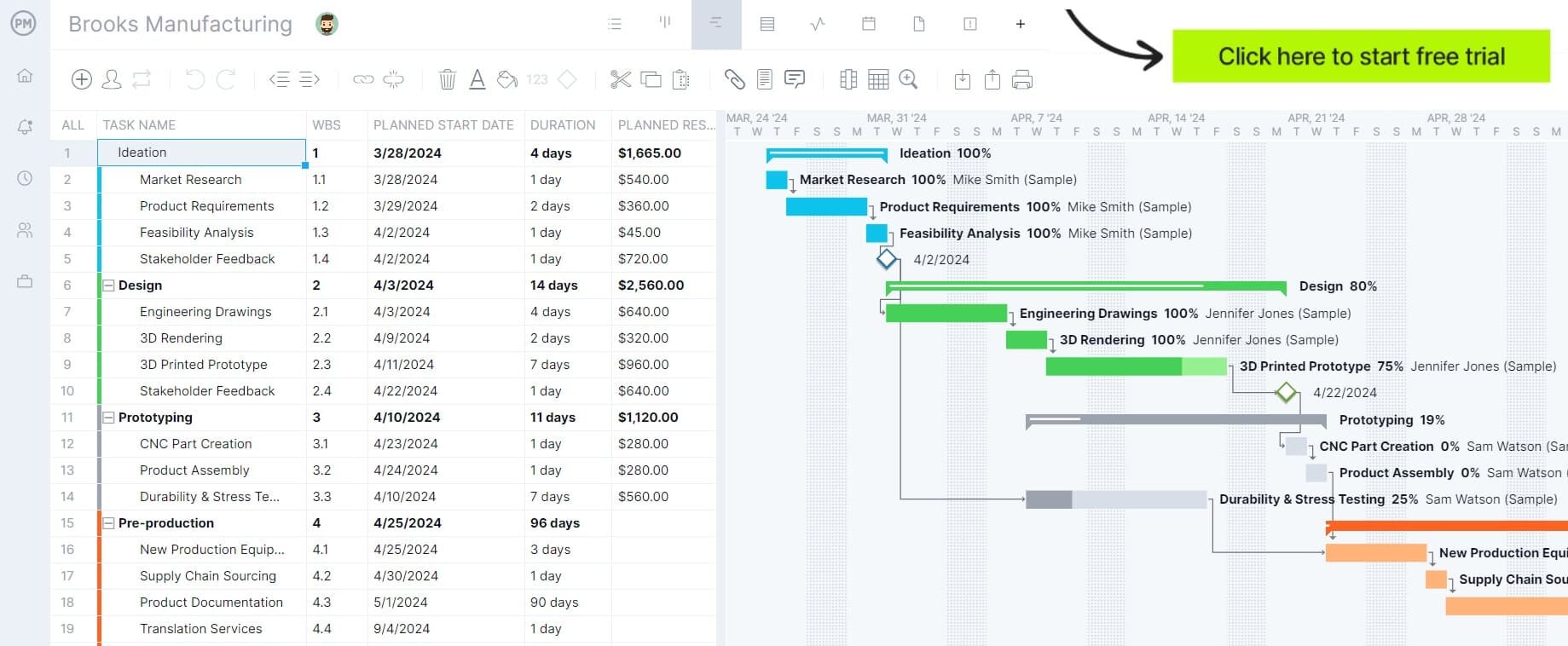
10 Key Benefits of a Work Breakdown Structure
The importance of a work breakdown structure in project management is reflected in the many benefits it offers throughout the project lifecycle. From scoping to scheduling, cost estimation and collaboration, a strong WBS lays the groundwork for successful delivery. Below are 10 key advantages that highlight WBS’s importance and answer why it’s essential to every project manager’s toolkit.
1. Defines the Scope of a Project
A WBS provides a detailed map of what the project will deliver, helping teams understand the full scope of work. Breaking down deliverables into smaller components prevents confusion, avoids scope creep and improves clarity for stakeholders. This transparency ensures that everyone is aligned on what is included and what isn’t—making the importance of the work breakdown structure in project management especially vital for scope control. It also serves as a communication tool between project managers, team members and stakeholders to ensure there’s no misunderstanding about the goals and limits of the project.
2. Sets the Stage for Creating a Project Schedule
The WBS is the foundation for building an accurate project schedule. Once tasks are identified and organized, they can be sequenced and assigned durations. This supports milestone creation and deadline planning. The importance of WBS brings to scheduling lies in the structured format that allows project managers to visualize progress and set realistic timelines, reducing the risk of bottlenecks or missed deliverables. Without a well-formed WBS, project timelines may be based on guesswork rather than a detailed understanding.

Get your free
Work Breakdown Structure Template
Use this free Work Breakdown Structure Template to manage your projects better.
Get the Template
3. Facilitates Resource Allocation and Resource Scheduling
Work breakdown structures help identify the specific resources needed for each task. With detailed task definitions, teams can assign people, equipment and materials appropriately. This ensures better workload balance and helps avoid over-allocation or shortages. The importance of WBS in project management is highlighted by how it supports efficient resource planning that aligns directly with the overall timeline and budget. By connecting specific resources to each work package, managers can optimize utilization and make strategic decisions that reduce waste and maximize output.
4. Helps Estimate Project Costs Accurately
Breaking work into granular components allows for more accurate cost estimation. Each task can be priced based on required resources, time and risk factors. This makes it easier to build a bottom-up budget that’s realistic and defensible. A work breakdown structure’s importance is especially high in cost control—better estimates lead to fewer surprises and more predictable financial outcomes. Cost transparency at the task level also helps stakeholders understand where funds are going and gives teams the ability to respond quickly to any financial issues that arise.
5. Facilitates the Implementation of CPM, PERT and other Scheduling Techniques
The WBS is essential for advanced scheduling methods like the critical path method (CPM) and program evaluation and review technique (PERT). These methods rely on well-defined tasks and dependencies—both of which are outputs of the WBS. This allows for precise identification of critical activities and time buffers. Why is WBS important in project management?
Because it’s the foundation of accurate scheduling analysis and risk mitigation strategies. The WBS transforms abstract project goals into a structured format that allows teams to apply these powerful tools and predict outcomes with greater confidence.
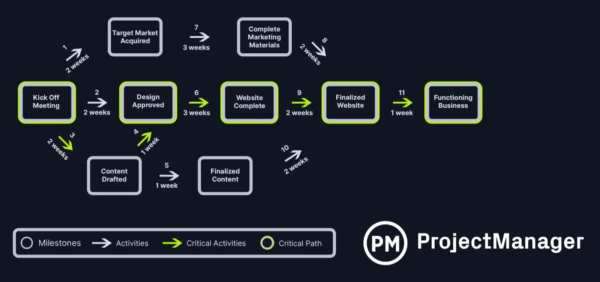
6. Simplifies Project Tracking and Performance Measurement
Once the WBS is created, it becomes a reference point for tracking task completion, cost and timeline performance. Managers can compare actual results to planned values at a granular level. This supports proactive decision-making and accountability. The importance of the work breakdown structure in project management is evident in how it enables early detection of variances and supports continuous improvement efforts. It also creates a measurable structure that can be used in performance evaluations, progress meetings and stakeholder updates, enhancing overall project transparency and responsiveness.
7. Helps Create Project Documentation
The WBS serves as the structural basis for many other project documents, including the scope statement, schedule, budget and risk management plan. It provides a common framework that improves consistency across documentation. WBS importance also lies in how it supports audits, lessons learned and project close-out by keeping records organized and traceable. Every task and deliverable is accounted for, making it easier to maintain compliance, perform internal reviews and extract valuable insights for future projects based on consistent documentation practices.
8. Promotes Team Accountability and Collaboration
A clear WBS outlines who is responsible for what, helping eliminate confusion and improve collaboration. Team members understand their tasks, deadlines and deliverables. This shared understanding fosters accountability and helps departments work together more effectively. The importance of a work breakdown structure is not just technical—it’s also cultural, supporting better communication and teamwork across the board. When each person can see where their responsibilities fit into the larger picture, collaboration becomes more purposeful and cross-functional teamwork is more seamless and efficient.
9. Enhances Risk Identification and Risk Planning
When work is broken down into smaller units, potential risks can be more easily identified and assessed. This allows for early risk mitigation strategies to be developed. The importance WBS has in risk planning lies in how it provides visibility into each task’s vulnerabilities, helping project teams proactively manage uncertainty. Risk planning becomes more effective when each risk is linked to a specific work package or phase, giving teams the insight needed to apply targeted strategies and keep projects on track despite potential disruptions.
Related: 9 Free Risk Management Templates for Excel
10. Sets Clear Stakeholder Expectations
The WBS provides a transparent view of the project’s deliverables and how they’ll be achieved. This visibility helps stakeholders understand what they can expect and when. It builds trust and facilitates smoother approval processes. The work breakdown structure’s importance is reinforced by how it helps manage stakeholder engagement and prevents miscommunication throughout the project lifecycle. When stakeholders can see the detailed plan broken down into actionable steps, their confidence in the team’s ability to deliver increases and their input becomes more constructive and timely.
Work Breakdown Structure Template
Download this free work breakdown structure template and get a prebuilt format that simplifies the process of creating a WBS. It allows project managers to input deliverables, break them down into smaller tasks and organize them hierarchically. This saves time and ensures consistency across projects.
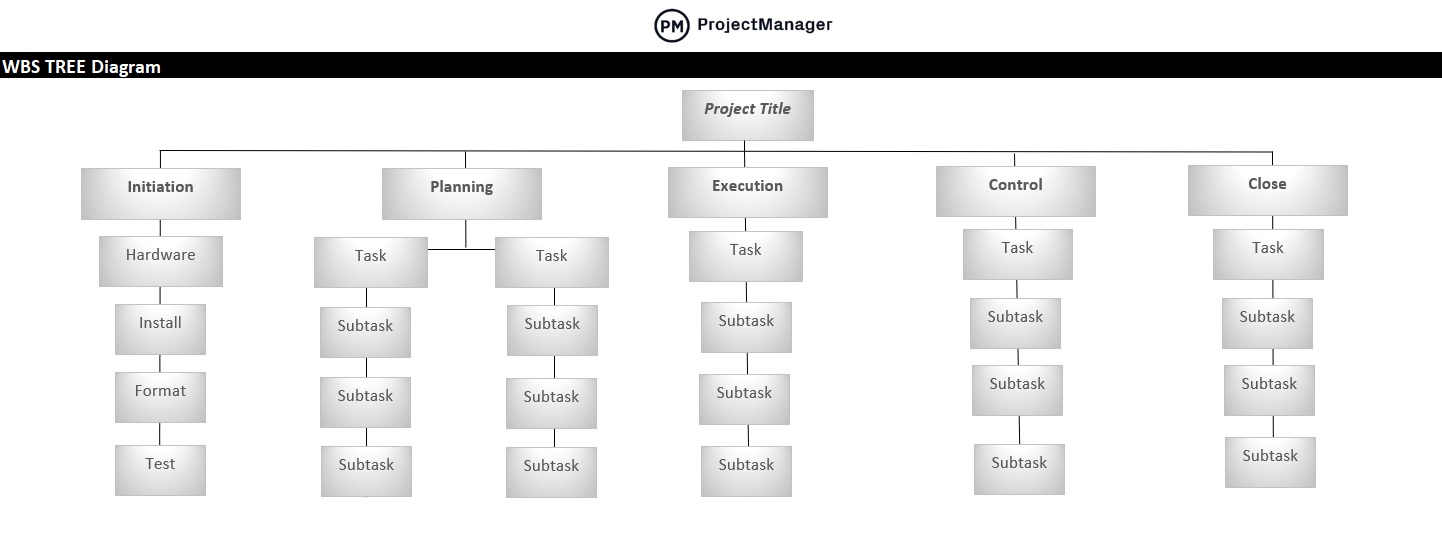
Templates are helpful starting points, but can become static or hard to update manually. For large or fast-moving projects, dynamic tools like project management software provide more flexibility, real-time updates and better integration with schedules and resource plans.
How ProjectManager Helps Create a Work Breakdown Structure Automatically
ProjectManager goes beyond static templates by offering tools that create and manage your WBS dynamically. With multiple project views—Gantt, kanban, calendar, task list and spreadsheet—you can build, edit and visualize your work breakdown structure the way that suits your team. Unlike templates, our software makes the WBS a living part of your workflow, instantly updating across all views when changes occur.
Connect the WBS to Real-World Team Capacity
With powerful resource management features, our software ensures your WBS is connected to real-world team capacity. The platform shows real-time availability, offers color-coded workload charts and centralizes assignments on the team page. This means you can assign tasks from the WBS with confidence, knowing workloads are balanced and resources are efficiently used.
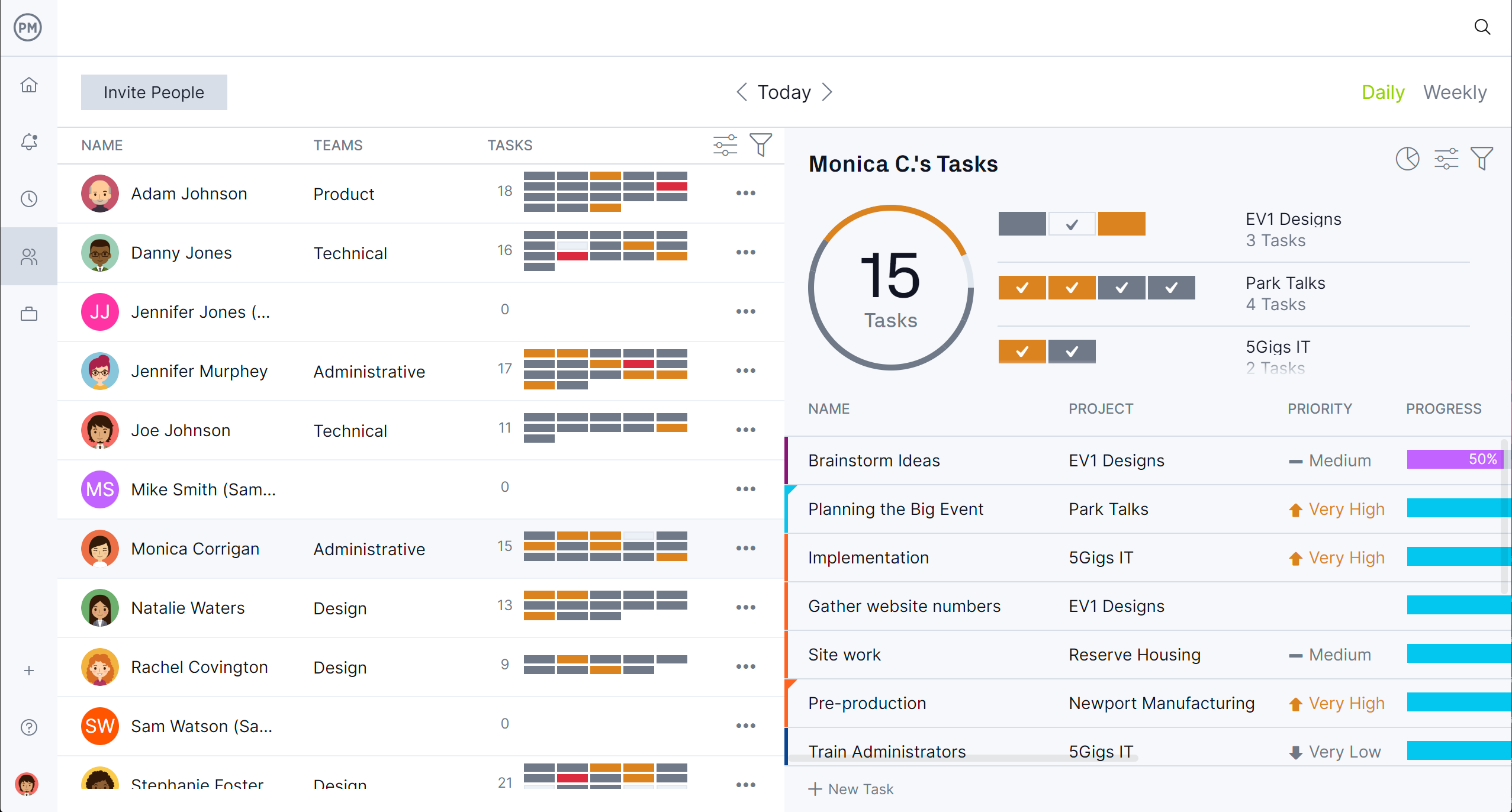
Track Progress From the WBS in Real Time
ProjectManager also helps you track progress from the WBS through real-time dashboards, customizable reports and secure timesheets. You can set baselines and monitor task variance to catch issues early. These tracking tools turn your WBS into a performance management system, helping you stay on budget and schedule while keeping stakeholders informed.
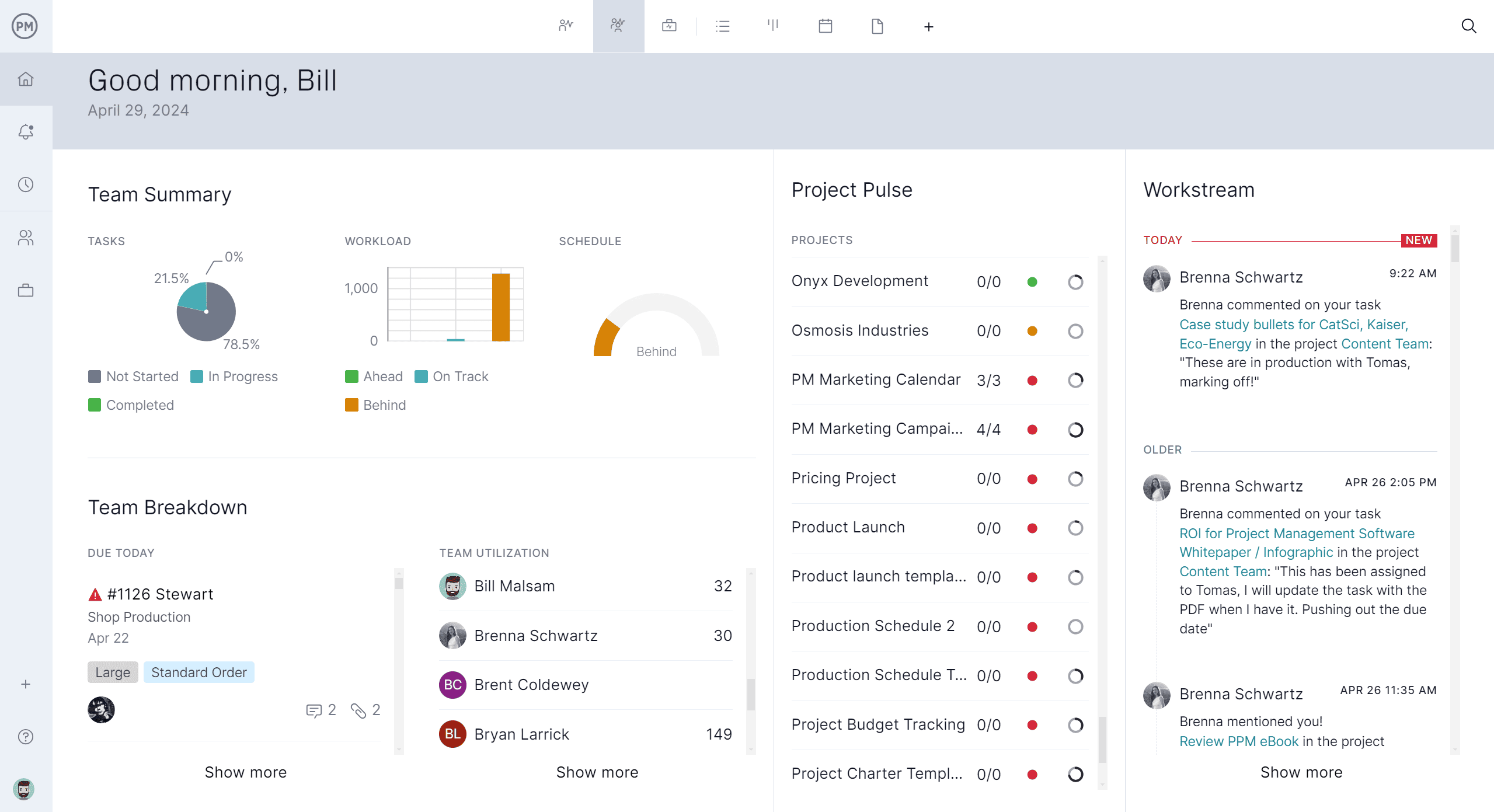
Related WBS Content
Explore more about work breakdown structures and related project planning resources:
- What Is a Work Plan? How to Make a Work Plan In 7 Steps
- What Is a Statement of Work? Definition & Examples
- 9 Work Templates for Excel and Word
- How to Identify Different Work Styles for Better Productivity
- How to Write a Work Proposal (with Example & Template)
- What Is a Work Package in Project Management?
ProjectManager is online project and portfolio management software that connects teams whether they’re in the office or out in the field. They can share files, comment at the task level and stay updated with email and in-app notifications. Join teams at Avis, Nestle and Siemens who use our software to deliver successful projects. Get started with ProjectManager today for free.

